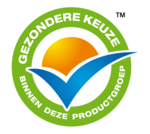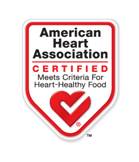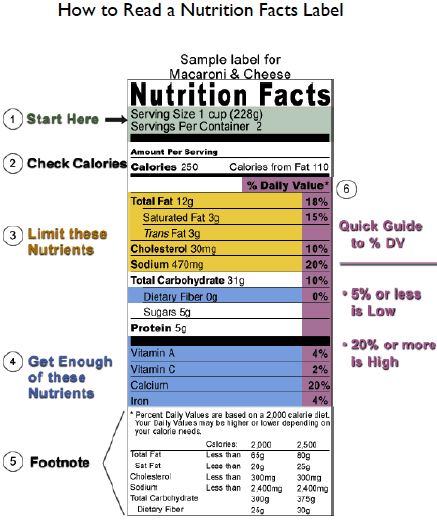 Today’s blog title is adapted from a comment in the Albert Heijn Employee Magazine from 2009.
Today’s blog title is adapted from a comment in the Albert Heijn Employee Magazine from 2009.
Each year, that grocery store chain in The Netherlands organizes “Gezonde Weken” or “Health Weeks.”
In 2009, the focus was on helping children to learn more about healthy eating in a fun way, so the chain handed out fairy tale place-mats for children. The fairy tale theme included “Wise Knight’s Facts” as well as “Princesses Tips” and was centered around the “Clover Land” theme, referring to the “Clover” logo based Point-of-Purchase Program designed to raise customer awareness of healthier food selection options in their stores.
That grocery store chain in The Netherlands talks about contributing to a “healthy and sustainable society” and further states that the company wishes to promote a healthy lifestyle and healthy food in particular. Their former “Clover” logo program has been dropped as the Dutch Government asked that a national logo program be developed and adopted and that new logo for 2011 is shown here.
We’ll come back to this logo developed in that country in tomorrow’s blog offering, which will be part 2 of 2 in this series of blog posts focusing on what is called Point-Of-Purchase (POP) labeling found on the Front-of-the-Package (FOP) of various food items sold in many locations from grocery stores to vending machines and more around the world.
Do you know which FOP POP criteria are in line with your personal food and nutrition intake goals?
Since we’re about to start off a New Year 2012, we thought it might be a good time to mention some POP visuals on the FOPs that you should be aware of as you do your shopping and make an effort to implement any new year’s resolutions that might possibly involve changing your food purchasing patterns a little.
Here in the USA, we’ve been teaching consumers to check out the BACK side of packages for decades now, hoping to encourage healthier overall food purchases as part of a balanced diet. You’re probably aware that besides there being a listing of ingredients in descending order by weight on packages, there is also a nutrition facts panel found on the BACK side of the product package.
The newer focus now is to raise awareness about what information can also be found on the FRONT of the package as well.
Besides written out nutrient and/or health claims, other symbols are now being used on the FOP to designate that a specific food item has met certain criteria of various voluntary industry and/or third party private sector programs and to display information concerning specific nutrient content as agreed to by both the government and private sector. (You can find details about some of those aforementioned nutrient claims using terms such as lite, reduced, etc., in many places in the USA, including from Clemson Cooperative Extension).
Various symbols (including keys/icons, stars, and stamps, etc.) are now being used on the FOP to encourage your POP decision making. These newer labeling approaches are being used both at the retail sales level and in some cases at the commercial and institutional food service settings level as well.
The Dietitians of Canada have done up a very nice piece on POP Nutrition Programs noting how the focus should be on what the consumer wants to know in order to make an informed choice.
Over the next couple of blogs we’ll review at least 11 such POP programs, starting with 5 today.
Before reviewing the first 5 of the FOP labeling programs we’re going to mention, let’s just reiterate that they are not meant to replace the nutrition facts panel on the BACK side of the product, found not far from the ingredient listing.
As a consumer, you now need to look for label information on both the FRONT and the BACK of packages before making a buying decision.
Below is a sample nutrition facts label showing key points communicated by that information piece:
If you desire additional information on dissecting a standard nutrition facts panel, feel free to check out this resource or others available on the www.
Now let’s move on to the first 5 of at least 11 POP nutrition information FOP efforts we will be discussing that are underway somewhere worldwide.
One of the professional practice groups one of us belongs to is the Sports, Cardiovascular, and Wellness Nutrition (SCAN) Dietetic Practice Group (DPG) of the American Dietetic Association (which becomes known as the Academy of Dietetics and Nutrition as of Jan 1, 2012).
The following information has been expanded after being adapted from another piece that can be found at the SCAN DPG’s website in their Nutrition Info for Consumers. The original table-format piece is called “Point-of-Purchase Food Labeling Systems” and was compiled by Cheryl Toner, MS, RD. The programs have been organized somewhat alphabetically and arbitrarily assigned numbers sequentially.
The actual sequential number in front of a program description is purely random. We used the same order for the first 10 programs mentioned that Cheryl did for her chart in case you wish to print that chart out and just add some hand-written notes to it.
NOTE: By mentioning any of these programs, you, the reader, are given the option of considering them or not as you see fit and making your own judgement call as to their value to you. Any content on this blog is for infotainment purposes only. Any opinion expressed by the staff are merely jottings as fellow consumers.
All graphic images belong to the respective holder of any Registered Trademark and have been so identified. Hot links within the blog post will take you directly to the program sites for further information, including concerning any program graphics.
Any errors or omissions are totally unintentional and the reader is again reminded that the following only qualifies as infotainment.
1. Over at Eat Right America, the staff describe themselves as “nutritarians” and have devised their own Aggregate Nutrient Density Index (ANDI) (note that the nutrient density food rankings, scoring system, and point determinations of food items combined are part of their own patented process which allots a score for nutrient content of between 1 and 1,000 for each food item) being promoted at Whole Foods Grocery Stores through their “Health Starts Here” program.
A score of 1,000 is considered perfect for a food item in that proprietary scoring system and examples of food items rating 1,000 would include mustard/turnip/collard greens, kale, or watercress.
On the lower end of the ANDI scoring system would be bulgur wheat at 17, quinoa at 21, walnuts at 34, almonds at 38, old fashioned oats at 53, etc. “ANDI scores are calculated by evaluating an extensive range of micronutrients, including vitamins, minerals, phytochemicals and antioxidant capacities.”
You can decide for yourself what you think of the ANDI scoring system.
With over 40 important nutrients each making valuable contributions to health, we personally find it surprising that some food items when using the ANDI score so high and others so low.
That said, a wide range of nutrients are being promoted through the ANDI, as well as noting food items with higher Oxygen Radical Absorbance Capacity (ORAC) values (a topic previously discussed on this blog site on 25Nov2011 under the topic of good-for-you qualities of spices and herbs). Besides items with higher ORAC values (ORAC score weighted x 2), the ANDI encourages consumption of calcium, beta carotene, alpha carotene, lutein & zeaxanthin, lycopene, fiber, folate, glucosinolates, iron, magnesium, niacin, selenium, thiamin, riboflavin, vitamin B6, vitamin B12, vitamin C, vitamin E, and zinc.
Whole Foods stores through their “Health Starts Here” (HSH) program focuses on what they call the “four pillars of healthy eating” also promoted by Eat Right America per report , which involve that one eats whole food items (whole, fresh, natural & organic), food items that are plant strong (fruits, vegetables, whole grains, nuts and seeds, beans and legumes), food items that are nutrient dense (they say by choosing foods higher on the ANDI), and food items that contain healthy fat(s) (avow, nuts and seeds).
There are other approaches to evaluating nutrient density that we just happen to personally prefer, but again, you can decide for yourself what makes sense to you in terms of helping you to reach your food and nutrition intake goals.
 2. The American Heart Association has its AHA Heart-Check program shield (Registered Trademark) that focuses on a threshold level of consumption of whole grains, fiber, and oat-soluble fiber by utilizing a specific symbol visual system on food labels.
2. The American Heart Association has its AHA Heart-Check program shield (Registered Trademark) that focuses on a threshold level of consumption of whole grains, fiber, and oat-soluble fiber by utilizing a specific symbol visual system on food labels.
A serving of the food product must:
- Be low in total fat (less than 6.5 grams),
- Be low in saturated fat (<1 gram and 15% or fewer calories from saturated fat),
- Have low or none Trans Fat: contain less than 0.5 g (and label serving)
- Be low in cholesterol (< 20 mg),
- Have a sodium value of < 480 milligrams (also per label serving) and
- Contain at least 10 percent of the Daily Value of one or more of these 6 naturally occurring beneficial nutrients: protein, vitamin A, vitamin C, calcium, iron or dietary fiber.
It also discourages the consumption of excessive total fat, saturated or trans fats, cholesterol, and sodium.
The red-and-white Heart-Check mark program as described here has been around since 1995. In September 2011, it was updated and food manufacturers have until year 2014 to reformulate any products before the new guidelines for the check mark program go into place in year 2014.
You can find a listing of currently approved products at the AHA website. Their “My Grocery List” builder is currently being enhanced and changes are scheduled to launch in Spring 2012.
The current Categories of the “Grocery List” you can search within include Baking Aisle, Beverages, Breakfast Foods, Canned, Dairy Case, Fresh, Frozen, Meat & Poultry, Pasta & Sauces, Seafood, Snacks, Soup, and My Items. You can also search for specifics by Manufacturer.
 3. A European nutrition facts label program called GDA Counter that originated in the United Kingdom (UK) and is overseen there by The Institute of Grocery Distribution (IGD) focuses on Guideline Daily Amounts (GDAs). The GDA labeling program was originally designed to improve food literacy in the UK.
3. A European nutrition facts label program called GDA Counter that originated in the United Kingdom (UK) and is overseen there by The Institute of Grocery Distribution (IGD) focuses on Guideline Daily Amounts (GDAs). The GDA labeling program was originally designed to improve food literacy in the UK.
It is being sponsored by various company websites which belong to the Food and Drink Federation. The GDA labeling program is asking consumers to focus on threshold levels of calories, sugars, fat, saturated fat, and salt when reading food labels. It started back in 1998 as a joint effort of the UK government, along with members of the food industry (including the Food and Drink Federation) in conjunction with consumer organizations in Europe, but was adopted by multinational firms such as Kellogg’s, Kraft, Nestle and PepsiCo, etc., by 2005. Although the GDA labeling program started in the UK, it is now being voluntarily implemented by the Food and Drink Industry in Ireland, and also elsewhere in all 27 of the European Union (EU) Member States.
4. The Guiding Stars® program uses a scoring system (based on a patented nutrition rating algorithm) of 0, 1, 2, or 3 stars and focuses on consuming food items with more vitamins, minerals, fiber and whole grains and is being promoted by Hannaford, Food Lion, Kings Super Market, Bloom, and Sweetbay grocery store chains.
Food items with 1 star are considered by the program to have good nutritional value, while items with 2 stars are considered by the program to have better nutritional value, and then items with 3 stars are considered to have the best nutritional value.
That program also discourages the consumption of trans or saturated fats, cholesterol, added sugars, and added sodium.
There is an app associated with this Guiding Stars program for the iPhone or or iPod touch that contains some guiding stars for certain items when using that Shopper app program–either the free version or the 99 cent version (the 99 cent version supports scanning of UPCs and sharing of lists) or the total $2.99 version (ads-free option).
All apps have limitations. Note that the Shopper app as of the date this infotainment was compiled displayed on the screen not quite what we might have expected in terms of what items were contained or not present in the database. For example, for a shopping list, when we searched for “turkey”per se, we found either deli turkey or a turkey fryer appliance, but no other forms of actual turkey (either whole or parts).
As another example, when we searched for “chicken breast” per se, we were given an option of “boneless chicken breast” at 3 stars, however, the “My Flyers” offers (items featured in your neighborhood stores) pulled up a “frozen buffalo boneless chicken wings” product which would not be rated with such stars. The version we used was 8.9.750 dated Dec 16, 2011.
The Shopper app did work well to display stars for fresh fruits and vegetables.
Note: We found another shopping app (NOT associated with Guiding Stars) called Pushpins which is a shopping app that also allows you to scan barcodes to create your own shopping list (it does best with national brands) and allows you to decide based on the label’s nutrition facts (that it will display for you!) whether or not the product coincides with your shopping goals. The Pushpins shopping app also will tie into digital coupon promotions. You can also email out shopping lists you have created which it organizes by category groupings using either a store aisle or product alphabetical approach and it includes pictures and product sizes. The aisle listing will actually adapt by store layout. We tried out version 2.0.5 dated Dec 19, 2011 and found it does what it is advertised to do, and it is free. By the way, you can submit photos of say store brands and they will try to update their database. If you find any errors, you can notify them accordingly.
 5. The Healthy Ideas (Trademarked) program also uses a type of scoring system and is promoted by Giant Food stores and Stop and Shop stores.
5. The Healthy Ideas (Trademarked) program also uses a type of scoring system and is promoted by Giant Food stores and Stop and Shop stores.
It focuses on the consumption of vitamins A and C, iron, calcium, protein, and fiber through purchases and consumption of fruits, vegetables, whole grains, fat-free / low-fat milk products, lean meats, poultry, fish, beans, eggs, and nuts. The program also discourages the consumption of saturated or trans fats, cholesterol, sodium, and added sugars.
Both chains feature the “Healthy Ideas” symbol on thousands of products in their stores, including many “convenience” food items such as prepared cold cereals.
Giant stores have a specific recipe section on their website called “Healthy Ideas” recipes in their larger recipe index. We also found some of Giant stores “Warm Winter Meals” as well as Vegetarian recipes and Vegetables recipes to be appealing. One could also find some of the Pork, Salad, or Soup recipes, etc., to be appealing if one is selective. Equivalent identical recipes, except featuring Stop & Shop brand items in place of Giant stores items, can be found at the Stop & Shop recipe section of their website.
You can read the criteria for the program at the Giant store site or the identical criteria for the program at the Stop & Shop site.
Part 2 of 2 in this blog series will cover at least another 6 Point-of-Purchase (POP) programs for which we have compiled some additional information to share with you.




Comments are closed.